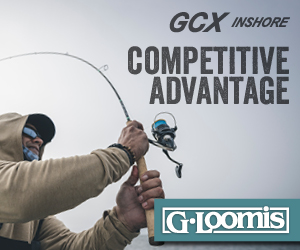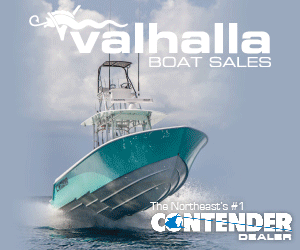In an effort to affirm the Atlantic Coast states commitment to cooperation in fisheries management, an Interstate Compact approved by Congress back in 1942 created the Atlantic States Marine Fisheries Commission (ASMFC).
Regrettably, no matter how many times the state of New Jersey comes to the ASFMC table with collected science, data and direct feedback from the fishing community, there hasn’t been much actual “cooperation” coming from the fellow commissioners.
On Tuesday, July 11, the National Oceanic and Atmospheric Administration (NOAA) affirmed New Jersey’s summer-flounder fishing size, bag limits and season, meaning all rules adopted by the state earlier this year will remain in effect through early September.
While an anti-New Jersey sentiment fostered by appointees to the ASFMC in recent years contributed to the non-compliance request by the commission, the decision by U.S. Secretary of Commerce Wilbur Ross finds New Jersey is actually in compliance for management of summer flounder and within the required reduction range for 2017, even if it doesn’t force New Jersey to abide by New York’s higher size limit.
“We are very pleased that NOAA worked with us to understand our position that sound science and good long-term planning must drive decisions about the management of summer flounder, one of the state’s most important recreational and commercial fish species,” said Bob Martin, commissioner of the New Jersey Department of Environmental Protection (NJDEP).
“New Jersey is fully committed to employing science and public education to conserve a species that is critical to the fishing culture and economy of the state,” Martin added.
“I would like to thank Secretary Ross and Assistant Administrator of NOAA Fisheries Chris Oliver and for working with the State of New Jersey to preserve and manage our fisheries through responsible management processes, while recognizing the economic impacts of this industry to the state,” said NJDEP Deputy Commissioner David Glass.
The decision means that the recreational summer flounder season that began May 25 and runs through September 5, remains unchanged. The minimum size remains 18 inches for summer flounder for most coastal waters, including the ocean, estuaries and creeks. Anglers in these areas may keep three legally sized fish per day. The size limit for Delaware Bay is 17 inches, with a three-fish per day limit. At Island Beach State Park the size limit for shore fishing is 16 inches, with a daily two-fish limit.
Toward the NJDEP’s goal of ensuring a sustainable summer flounder fishery, the state Division of Fish and Wildlife launched a campaign to educate the fishing public on how to reduce discard mortality by safely releasing summer flounder that do not meet minimum size requirements.
“We are asking all anglers to help protect this important species for future generations,” Commissioner Martin said.
The If You Can’t Keep It, Save It! campaign focuses on proper handling methods and gear to use to reduce unintentional mortalities that can occur when flounder that do not meet minimum length requirements are returned to the water. The campaign builds upon the FishSmart campaign promoted by NOAA.
New Jersey’s effort features distribution of print and electronic brochures to anglers registered through the state’s Saltwater Registry, charter and party boat operations, bait-and-tackle shops and members of fishing organizations, as well as radio public-service announcements and newspaper advertisements.
To make the If You Can’t Keep It, Save It! campaign even more successful, the Division of Fish and Wildlife, in coordination with the American Sportfishing Association and Eagle Claw Fishing is distributing 20,000 free larger-sized hooks available at state tackle shops that help anglers land bigger fish and reduce the potential for discards. The Save the Flounder Fishery Fund provided valuable support to this effort.
The day after the Commerce Secretary’s announcement, Eagle Claw Fishing Tackle was honored at the ICAST 2017 “Best of Show” awards for their 2017 Flounder Sample Pack, receiving their New Product Showcase award during the Chairman’s Industry Awards Reception at the Orange County Convention Center on July 12.
In an effort to further reduce the mortality rate on undersized fluke thrown back, the Division of Fish and Wildlife is also encouraging anglers to follow these techniques:
- Plan Ahead – Expect to release fish and have the necessary equipment to do so, including de-hookers and proper nets; more experienced anglers may also consider using a recompression tool, a device that allows fish to be returned to the water at a safer depth.
- Use Appropriate Gear – Use gear suited to the size of the fish that you are trying to catch; 5/0 to 7/0 size hooks are recommended to successfully land bigger fish and reduce discards.
- Handle Fish Carefully – Use knotless, rubberized landing nets and rubberized gloves to avoid removing the protective slime layer on fish and help ensure survival when it is placed back in the water.
In February, the Atlantic States Marine Fisheries Commission (ASMFC) approved a 19-inch size limit for New Jersey. However, NJDEP Division of Fish and Wildlife data show that few fish in New Jersey reach that size due to the species’ biological needs and distribution patterns. Moreover, the overwhelming majority of fish that would meet that “keeper” size limit would be reproductive females.
New Jersey appealed the ASMFC decision to NOAA, expressing concerns that the larger size limit would result in a significant increase in discard mortalities and would make the population less sustainable by forcing anglers to keep reproductive females. In previous years commissioners at the ASMFC allowed states to use “conservation equivalency” for the summer flounder fishery whereby individual states can set the season, size and bag limit that best suits the state’s individual fishing needs based on the allowable harvest.
However, once New York lobbied to force New Jersey into a shared region with Connecticut, the Garden State’s ability to manage its own fishery became seriously impacted.
An email alert from NOAA Fisheries on July 6, 2017 even memorialized that fact that states had the authority to manage their own fisheries. “We are continuing conservation equivalency for the summer flounder fishery,” the NOAA release stated, adding “Conservation equivalency means that we have waived the Federal recreational bag limit, minimum fish size, and fishing season, and vessel owners are subject only to regulations in their state. Please contact your state for information on your state’s summer flounder regulations.”
While not every angler in New Jersey is happy with the loss of season in September, Jim Donofrio of the Recreational Fishing Alliance (RFA) said the decision by the Trump administration, notably Interior Secretary Ryan Zinke and Commerce Secretary Ross, represents a big win for coastal fishermen.
“We are extremely grateful to Secretary Zinke and Secretary Ross for their leadership and taking a comprehensive look at this issue and siding with sound natural resource management,” Donofrio said, adding “We commend Commissioner Martin and his team for making a brilliant argument and taking a stand up for fishermen, the resource, and sound natural resource management.”

